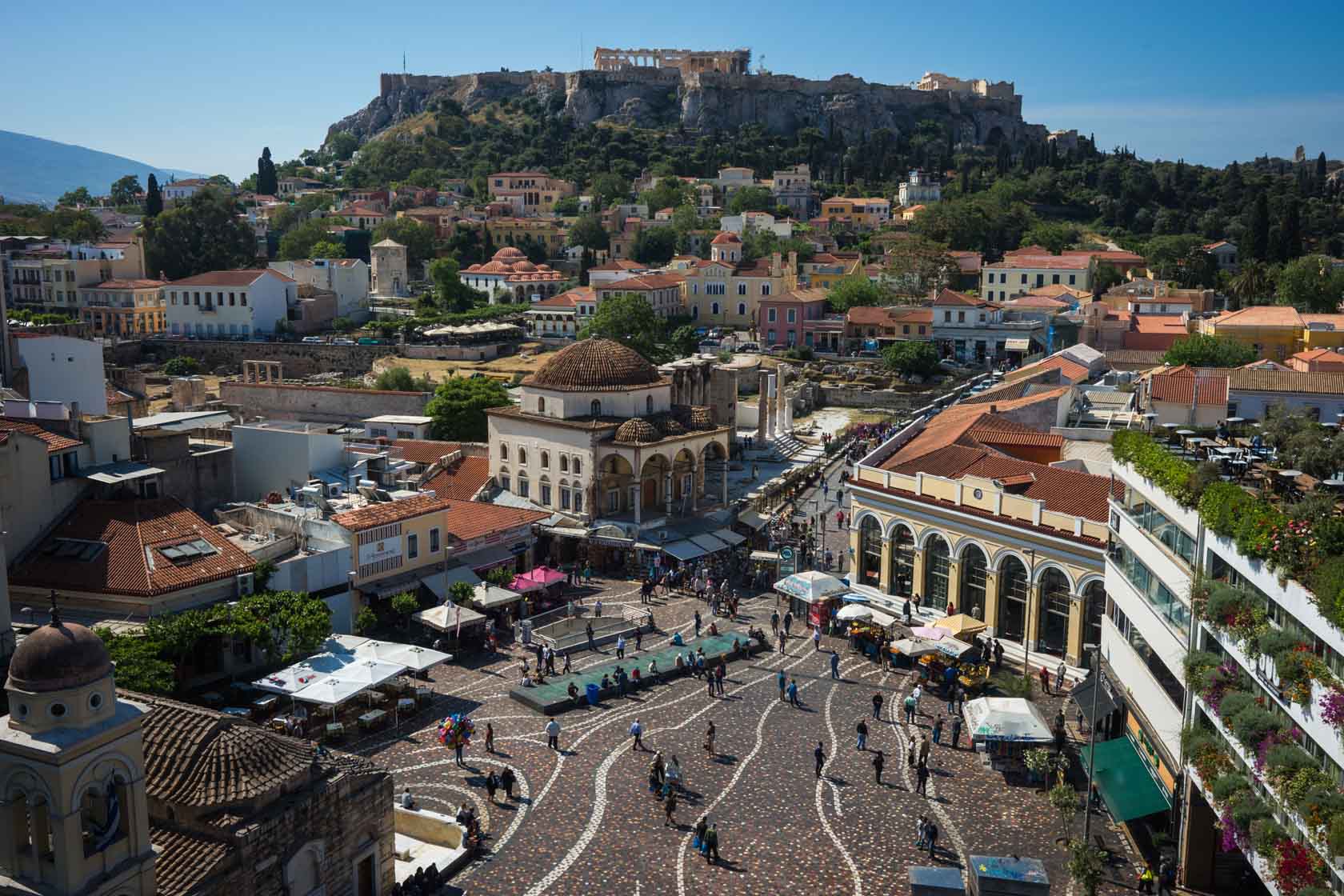Athens, the birthplace of modern Western civilization, is a city cherished by travelers. At Travel to Athens, we present a concise Athens travel guide, enticing you to delve deeper into the authentic side of this glorious city. Explore the bustling streets and serene corners. Experience the elegance of upscale neighborhoods like Kolonaki, the charm of picturesque areas such as Plaka, and the pulsating energy of vibrant nightlife spots like Psiri and Gazi.
Athens caters to all types of travelers, whether you’re seeking a budget-friendly vacation or a lavish experience. Embrace the multifaceted nature of the Greek capital, where ancient intertwines with the new, classic merges with modern, conservative meets progressive, and old embraces the creative.
Embark on a journey to Athens and discover a city that has captured the hearts of countless adventurers throughout the ages. Let Travel to Athens be your trusted companion, guiding you through an extraordinary exploration of this enchanting destination.

When it comes to hotels in Athens, you’ll be pleasantly surprised by the incredible value they offer. Compared to other European destinations, you’ll find high-quality accommodations at significantly lower rates. Combine this with the traditional Greek hospitality that awaits you in most hotels, and your trip is bound to be an unforgettable experience. In recent years, the range of accommodation options in Athens has doubled, providing even more choices for discerning travelers.
The city boasts a range of new luxury hotels, boutique hotels, and apartment hotels located both in the city center and its suburbs. Additionally, numerous vacation rentals can be found throughout the entire Attica region. Before you make your hotel reservation, make sure to check out the hotel reviews available on major review websites. This will ensure that you secure the best possible hotel at the most competitive rate.
Athens offers a diverse array of travel accommodations to suit every preference. Whether you’re seeking modern design hotels in Psiri and Monastiraki, classic hotels near Plaka and the Acropolis Museum, or vacation rentals in central areas like Psiri, Koukaki, Ambelokipi, Petralona and Pangrati, you’ll find the perfect option to suit your needs.
Experience the unparalleled hospitality and exceptional accommodations available in Athens. Let Travel to Athens guide you to the perfect hotel, setting the stage for an unforgettable stay in this captivating city.
Museums of Athens
The museums of Athens offer an unparalleled collection that showcases the remarkable artistry of Greece throughout its illustrious history. Prepare to be captivated as you explore these cultural havens, housing some of the world’s most significant artifacts. Embark on a journey to the Acropolis Museum, a magnificent tribute to the Parthenon and the iconic Acropolis hill. Immerse yourself in the National Archaeological Museum, a treasure trove of artifacts spanning various periods of ancient Greek civilization. Delve into the Benaki Museum, a collection of museums dedicated to earlier times, and unravel the wonders of Byzantine and Christian art at the Byzantine & Christian Museum. These are just a glimpse of the numerous museums awaiting your visit, each offering a unique glimpse into the past.
A trip to Athens is an extraordinary opportunity to delve into the history of modern civilization. Make sure to allocate ample time to explore not only the renowned museums but also the smaller, hidden gems scattered throughout the city. Within their walls, you will encounter awe-inspiring art treasures that will leave an indelible impression on your soul.
Join a remarkable journey through the museums of Athens, Greece, and allow yourself to be transported through the time. Discover the extraordinary artistry that has shaped the course of history and gain a profound understanding of the rich cultural heritage of this enchanting city.
Sightseeing in Athens
The archaeological sites of Athens are revered as iconic landmarks of human history. Prepare to be awe-struck as you encounter the grandeur of the Acropolis and the majestic Parthenon. Explore the Ancient Agora and immerse yourself in the historical significance of the Areopagus. These must-visit spots are steeped in unique historical importance, offering an unforgettable travel experience.
Ensure that your Athens travel itinerary includes renowned sightseeing areas that hold profound cultural and historical significance. Don’t miss the Roman Agora, the Keramikos Ancient Cemetery, Hadrian’s Library, and the Temple of Olympian Zeus. Delve into the captivating past as you visit the Panathinaikon Stadium, the birthplace of the first modern Olympics, and marvel at the architectural splendor of the Parliament of Greece. Discover hidden treasures within the city’s small Byzantine Churches. Take a leisurely stroll through the enchanting National Garden, and be sure to admire the exquisite buildings lining Panepistimiou Street, such as the Academy, the University, and the National Library.
To make the most of your visit, it is recommended to allocate at least three days to explore the most significant sightseeing spots in the city.
Unleash the magic of Athens as you embark on a journey through time. Immerse yourself in the rich history and cultural heritage of this extraordinary city, crafting memories that will last a lifetime.

